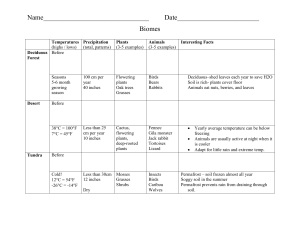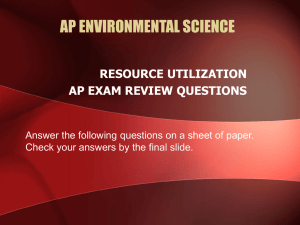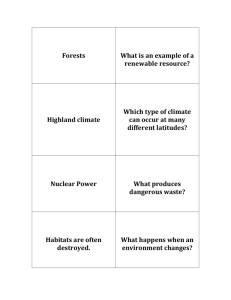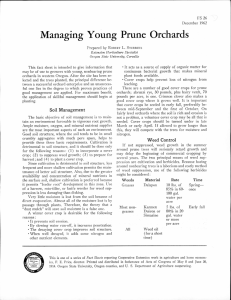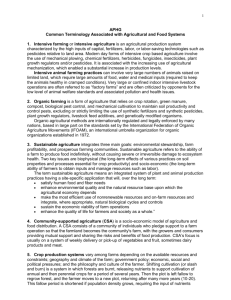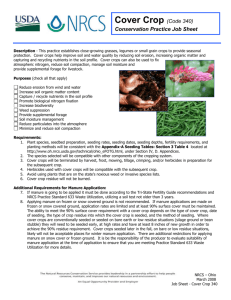Habitat and Sustainability information cards
advertisement
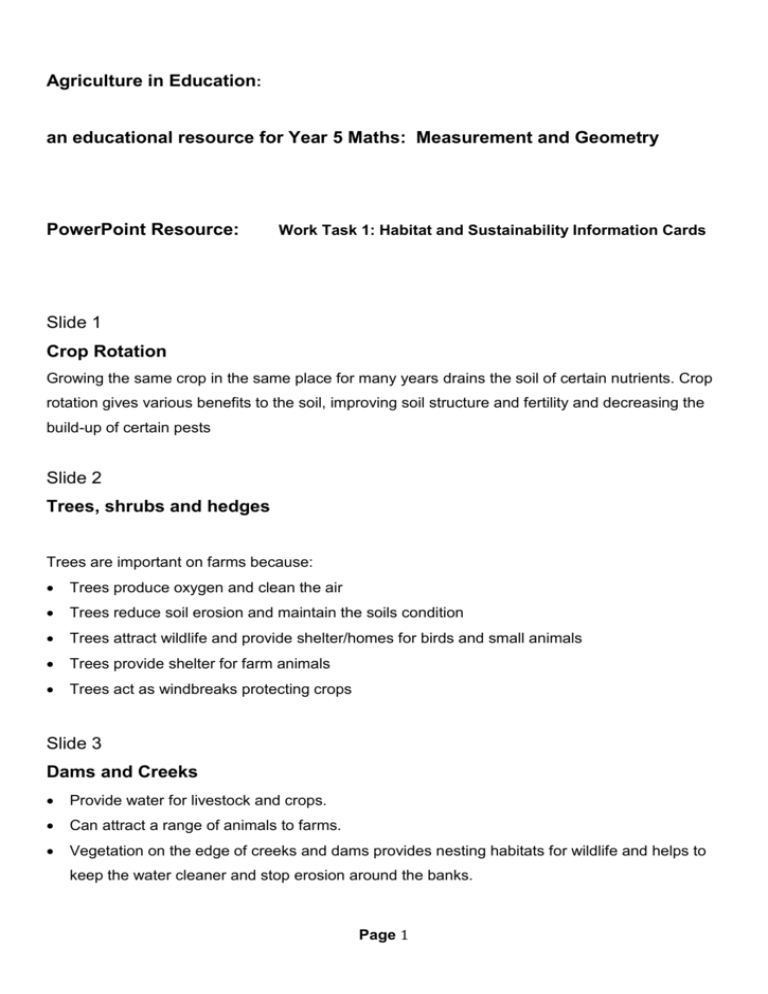
Agriculture in Education: an educational resource for Year 5 Maths: Measurement and Geometry PowerPoint Resource: Work Task 1: Habitat and Sustainability Information Cards Slide 1 Crop Rotation Growing the same crop in the same place for many years drains the soil of certain nutrients. Crop rotation gives various benefits to the soil, improving soil structure and fertility and decreasing the build-up of certain pests Slide 2 Trees, shrubs and hedges Trees are important on farms because: Trees produce oxygen and clean the air Trees reduce soil erosion and maintain the soils condition Trees attract wildlife and provide shelter/homes for birds and small animals Trees provide shelter for farm animals Trees act as windbreaks protecting crops Slide 3 Dams and Creeks Provide water for livestock and crops. Can attract a range of animals to farms. Vegetation on the edge of creeks and dams provides nesting habitats for wildlife and helps to keep the water cleaner and stop erosion around the banks. Page 1 Slide 4 Grazed Paddock A fenced area where animals such as sheep and cattle graze— that is, eat grass in a field. Fertilisers can be used to make the grass eaten by livestock grow faster. Some crop stubble can be used as feed for livestock once it is harvested. Slide 5 Cropped Paddock A paddock where crops such as wheat, spinach, peas or carrots have been planted. Crops are used to feed farm animals and / or to sell to consumers and stores Crop Rotation helps to sustain nutrients in the soil and keep the land healthy for further crops. Slide 6 Existing Woodland It is important to keep some areas of natural vegetation. Exisiting woodlands include: Old trees and shrubs that have been on the farm for a long time. Logs, surface rocks and ground cover in this area provide habitats for small mammals, birds and reptiles. As the leaves and sticks start to rot (decompose), they add humus and improve the soil. Animals grazing in these areas are sometimes used to keep down the amount of low vegetation that can become a fire hazard. Slide 7 Chickens Chicken breeds can be divided into two basic categories: birds for meat and birds for eggs. If chickens are allowed to roam large garden spaces or open land and are only kept in housing at night for protection, then small hen houses are suitable. If chickens are kept within the hen houses for most of the time, the housing must be significantly larger to allow for nesting, wing flapping, running, scratching and other natural chicken behaviour. Page 2



